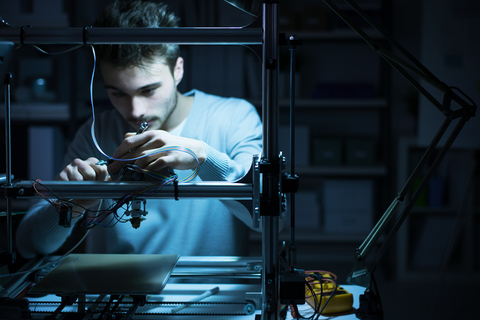A new method for 3D printing living artificial tissues

A team from the University of Bristol’s School of Cellular and Molecular Medicine, together with scientists at the University of Oxford, has developed a new method to 3D print stem cells to form complex living 3D structures.
The approach could revolutionise regenerative medicine, enabling the production of complex tissues and cartilage that would potentially support, repair or augment diseased and damaged areas of the body.
In research published in Scientific Reports, an interdisciplinary team of researchers from the University of Bristol’s School of Cellular and Molecular Medicine and the University of Oxford’s Departments of Chemistry, Physiology and Genetics demonstrated how a range of living mammalian cells can be printed into high resolution tissue constructs.
Interest in 3D printing for organ transplantation is increasing as research gains pace. However, printing high resolution living tissues is challenging. Cells often move within printed structures and the soft scaffolds printed to support the cells can collapse on themselves.
Led by Professor Hagan Bayley, Professor of Chemical Biology in the University of Oxford’s Department of Chemistry, the team devised a way to produce tissues in self-contained cells that support the structures to keep their shape.
The researchers hope that with further development, the materials could have a wide impact on healthcare worldwide. Potential applications include shaping near future technologies in toxicology and even reproducible human tissue models that could take away the need for clinical animal testing.
Dr Adam Perriman from the University of Bristol’s School of Cellular and Molecular Medicine, said “The bioprinting approach developed by Bristol’s School of Cellular and Molcular Medicine in partnership with Oxford University is very exciting, as the cellular constructs can be printed efficiently at extremely high resolution with very little waste. The ability to 3D print with adult stem cells and still have them differentiate was remarkable, and really shows the potential of this new methodology to impact regenerative medicine globally.”








